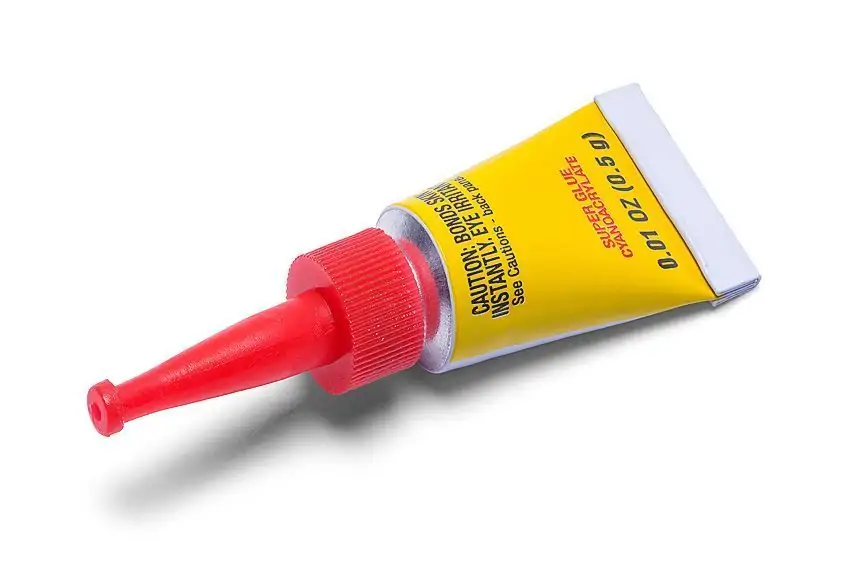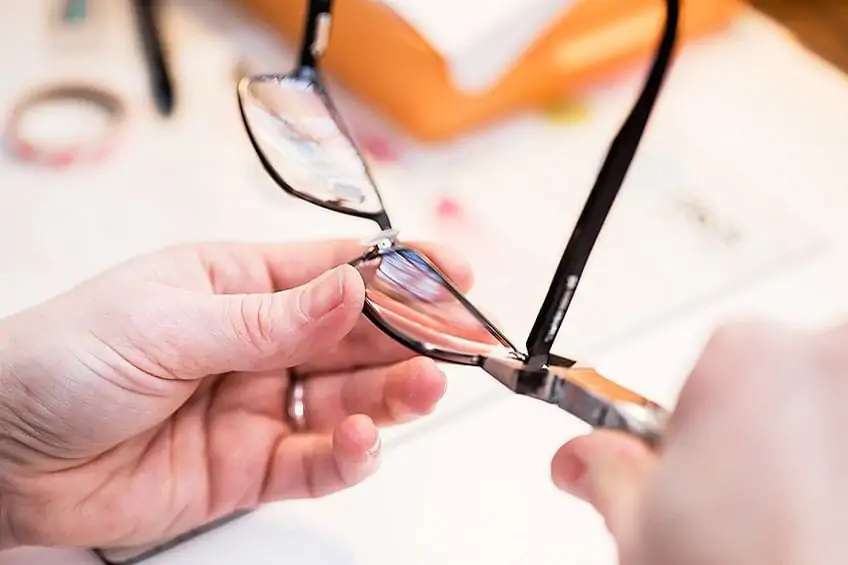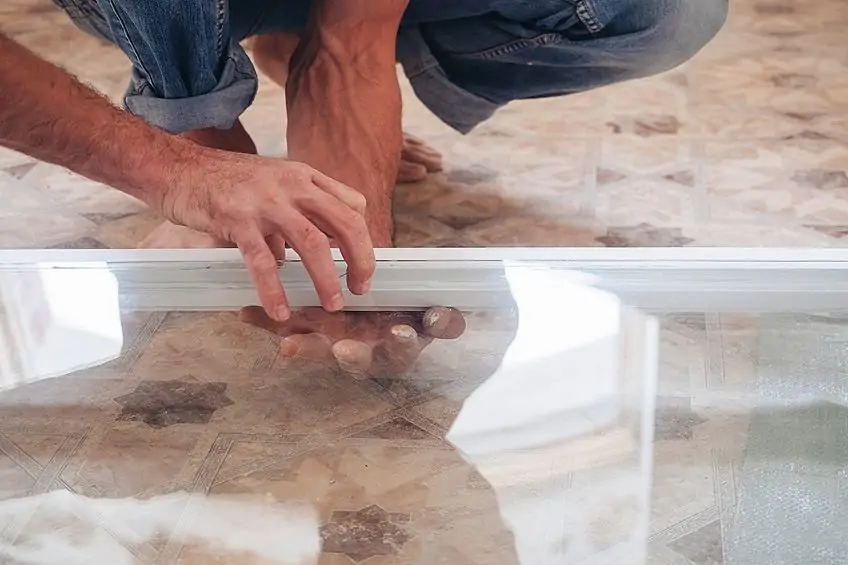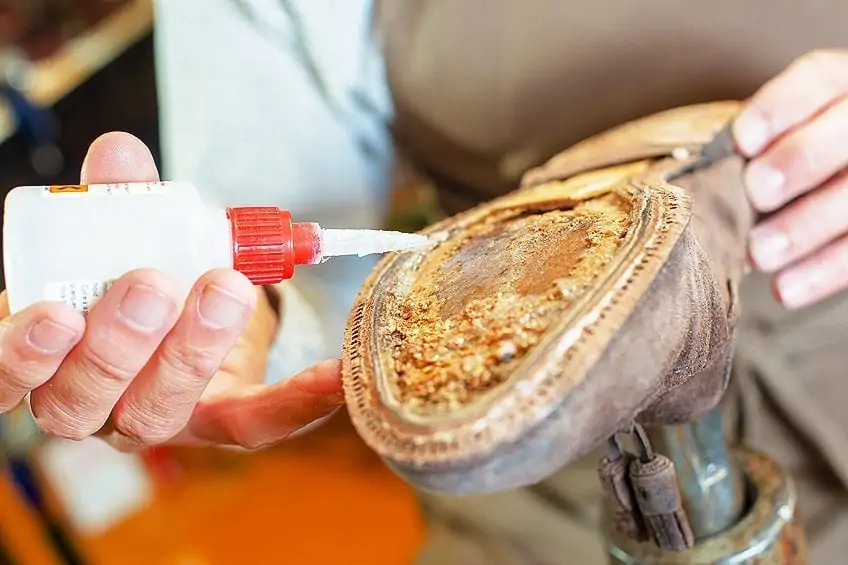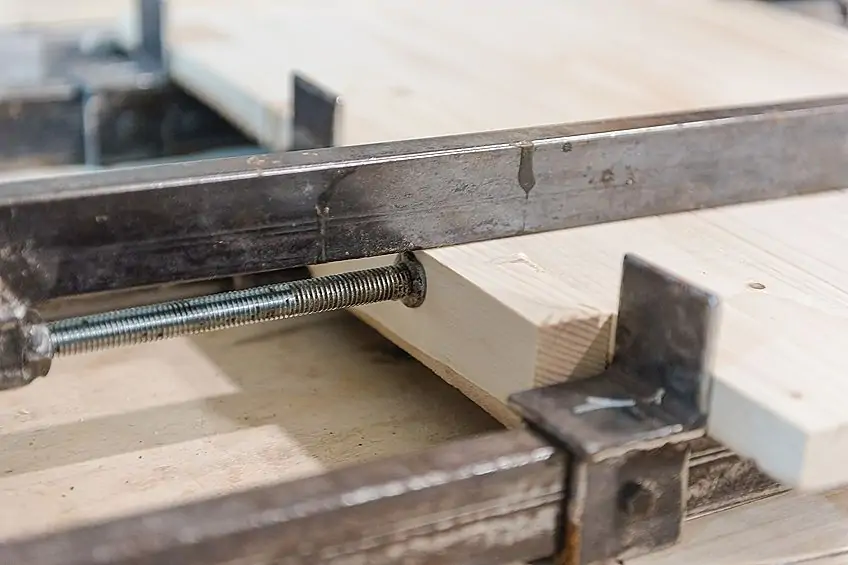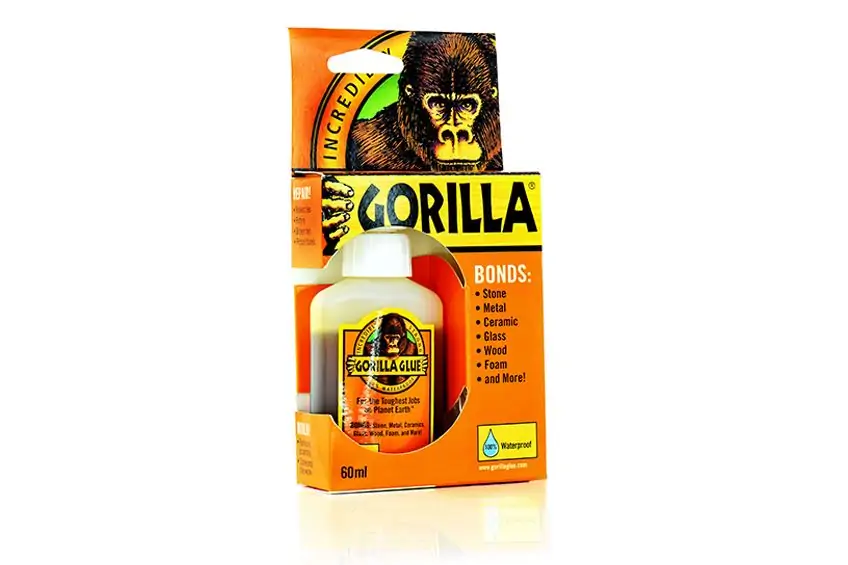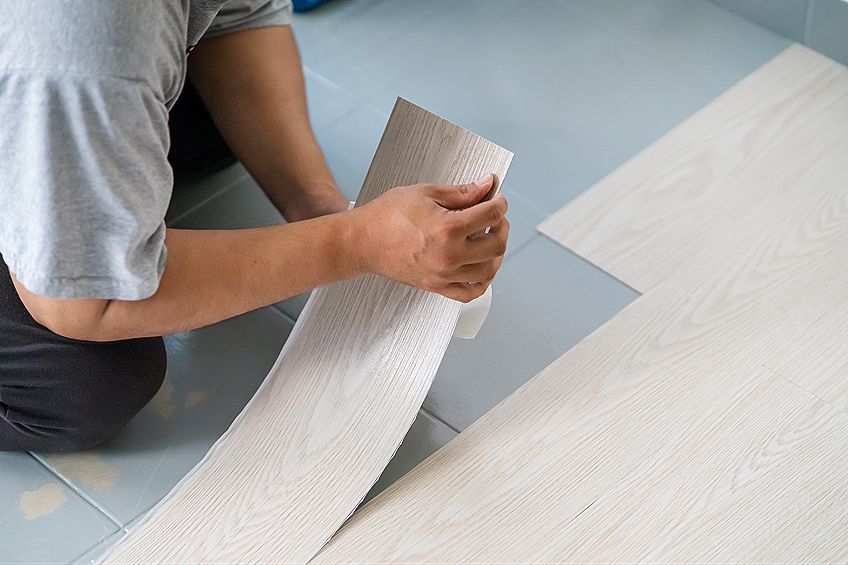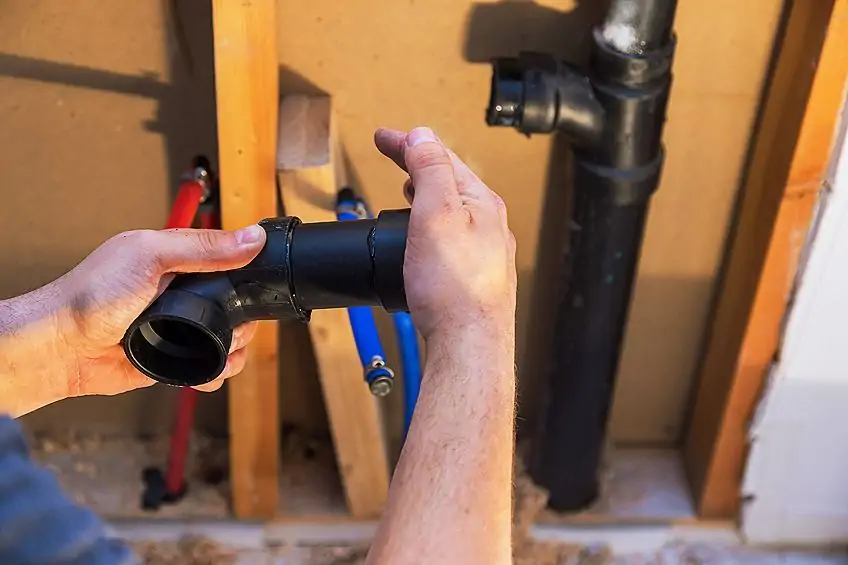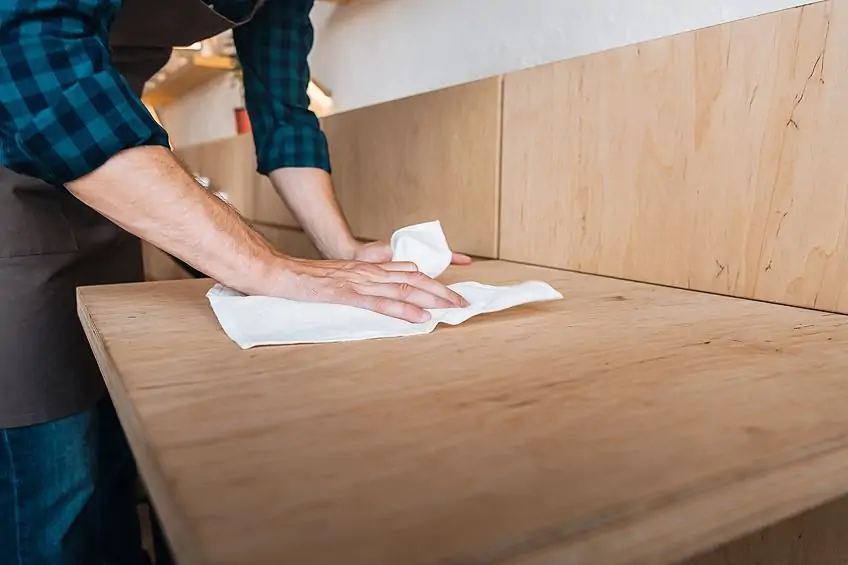E6000 Glue Review and Guide – How to Use E6000 to Fix Anything
This post may contain affiliate links. We may earn a small commission from purchases made through them, at no additional cost to you. You help to support resin-expert.com
One of the earliest things we learn in life is that things break. Whether one of our toys breaks when we’re little, or our favorite mug meets the floor one morning while we’re rushing to leave for work. Things break; however, this doesn’t mean that they are beyond repair and that they are destined for the garbage heap. These days, we have powerful adhesives that have the ability to repair materials like glass, metal, wood, fabric, masonry, and that’s all just one product! One of the most reputable of these products is E6000 glue, and for your convenience, we have compiled this E6000 glue review and guide. Let’s have a look at what it is, how to use E6000, what makes it special, and how it compares to other adhesives on the market.
Table of Contents
What Is E6000 Glue?
We all know someone who is simply the crowd favorite at parties, someone beyond reproach that everyone universally agrees with is just a really agreeable person, someone that gets along with everyone and never really disappoints. E6000 is like one of these people, although there might be products that are objectively better in many aspects including adhesion and resistance to exterior forces, there are literally entire armies of people from all trades and professions that swear by this product.
E6000 is a high-grade polyurethane adhesive that has been around since the late ’80s and has become something of a household brand in the eyes of millions of Americans. This adhesive is one of the toughest, most robust adhesives on the market that is graded for use on so many surfaces that it feels like sometimes they’re just making new versions of the product to see how far they can push this simple glue.
This might seem funny, but E6000 sticks to pretty much anything, and with an elasticity rating of just over 900% it comes as no surprise that individuals choose to use this product to fix photographs, adhere ornaments to walls, repair doors, and even use it as a semi-permanent locking mechanism for small machinery.
This glue is not only strong and versatile, but it dries quickly and is resistant to exterior forces such as UV radiation, moisture (including torrential downpour), extreme heat, and even abrasion and impact. Knowing all of this, it comes as no surprise that you will rarely (if ever) see an advertisement for this product as it pretty much sells itself every time it’s used and recommended.
E6000 is also a clear glue which means it won’t leave behind any nasty residue. This is why many people use it to repair photographs, sports equipment, glassware, porcelain, plastics, and other items which might otherwise lose their aesthetic appeal if repaired with an adhesive that contains dye pigments. Since the base formula for E6000 is polyurethane-based, it is also fire-resistant, which means it’s safe to use on electronic equipment that might otherwise create a lot of heat.
You would be hard-pressed to find an occupation/profession where E6000 wouldn’t be useful.
What Can E6000 Be Used For?
Knowing which materials E6000 can be used on is all well and good but knowing which situations it can be used in practice is ever so slightly more useful than this. One would think based on the description we have given thus far that E6000 is an adhesive that is only meant to be used in situations where serious repairs need to be made, but this could not be further from the truth as the glue is perfect for odd repairs around the house and various crafting applications as well.
If you have cracked your favorite coffee mug and simply can’t bear to part with it just yet, E6000 will ensure that it’s as good as new within a few hours, and because the formula is clear there would be no adhesive visible where the pieces have been joined together.
One of E6000’s biggest selling points is that it is not water-soluble, whether it comes into momentary contact with water or is completely submerged, E6000 will maintain its adhesion to a given material. This is perfect if you were thinking about gluing something to a piece of clothing that needs to be washed or if you simply need to clean a workpiece that needs to be assembled beforehand.
There are very few adhesives on the market that are this versatile, in fact, if you need to stick fabric to metal, wood to glass, plastic, or vinyl this product is right up your alley.
This makes it perfect for mixed media or installation art pieces that have different materials and mediums that wouldn’t otherwise be in contact with one another. It’s even more useful for DIY installations around your home. Running out of nails, fittings, and screws can delay your project, and sometimes we can’t afford these little setbacks. Fortunately, E6000 can handle everything from hanging light fixtures to hanging party decorations without so much as needing to pay it a second thought. The possibilities of what you could use this adhesive for are virtually limitless due to its strength and versatility.
| Surfaces | Can E6000 Be Used on It? |
| Metal | ✔ |
| Wood | ✔ |
| Ceramic | ✔ |
| Fabric | ✔ |
| Rubber | ✔ |
| Vinyl | ✔ |
| Glass | ✔ |
| Plastic | ✔ |
| Styrofoam | ✘ |
| Polystyrene | ✘ |
| Polyethylene | ✘ |
| Polypropylene | ✘ |
E6000 Glue: Review and Usage
This e6000 glue review and guide would be very useful if we didn’t let you know exactly what it can be used on. To say that that this adhesive is versatile would be the understatement of the century, considering that it would be easier if we simply listed the two or three things it won’t stick to, and knowing the E6000 team, they’re probably hard at work making that number zero as you read this.
E6000 is graded for use on wood, glass, fiberglass, fabric, brick, masonry, plastic, metal, ceramics, vinyl, and even rubber. This is one of the most versatile adhesives available for over-the-counter to regular consumers which is staggering considering that its tensile strength and adhesion are near industrial grade. How strong is E6000 glue?
Well, considering that it has a tensile strength of 3200 psi this adhesive is pretty much as strong as they come in the consumer market, and the showboating doesn’t end there. If you think the strength of E6000 glue is impressive consider the fact that when fully cured it has a shore hardness of 80, meaning it is a direct parallel to hard hats construction workers use and those are designed to prevent concussive forces and brain injury. Still not impressed, are you? Well, E6000 is also practically insolvable.
The team that created it has stated that chemicals such as motor oil, phosphoric acid, sodium chloride, sulphuric acid, wine, boric acid, beer, antifreeze, and even ammonium nitrate have virtually no effect on the weight, adhesion, or strength quality of this glue.
How strong is E6000 glue? It’s pretty strong, and we do not recommend getting any on your hands or clothes accidentally or you’ll have a pretty hard time getting rid of it if you aren’t willing to cut it out.
Another reason you might not want to get some of this stuff on something accidentally is that E6000 dry time is quick. This adhesive will dry in 10 minutes and set completely in 24 hours, meaning that if you are working on a project and get some on your worktable unwittingly, you’re going to have a hard time getting it off if you only notice it the following day. E6000 dry time, tensile strength, versatility, and resistance to exterior forces make it a high-quality adhesive that will do anything you ask of it, at a reasonable price.
PROS
- Versatile
- Strong adhesion
- Waterproof
- Fire resistant
- UV ray resistant
- High tensile strength
- Very flexible (high elasticity rating)
- Clear to the eye
CONS
- The smell can cause discomfort
- Sold in small quantities
- Not easy to remove
- Can be challenging to apply if it needs to be spread/flattened
How Good Is E6000 Compared to Other Leading Brands?
You don’t need to be a crafting aficionado to know there are multiple brands of glue on the market that are arguably just as impressive as E6000. It is for this reason that we have decided to compare E6000 to another household favorite, Gorilla Glue! Let’s have a look at how these two products fare against one another so you can make an informed decision.
E6000 Glue
Since you already have most of the information about this glue, we’ll give you its basic attributes in order to measure it objectively against its leading competitor. E6000 is a polyurethane-based adhesive produced and sold in quantities of about 4.5 Fl oz. The adhesive is extremely strong with a tensile strength rating of 3200 PSI and shore strength rating of roughly 8 (the same as a standard-issue hardhat for construction workers).
It is a clear liquid that can be purchased in its ordinary form or in the E6000 plus variety which is odorless but still possess the same adhesion quality and strength with the only difference being that it is completely odorless. E6000 dry time is really quick, with acceptable adhesion taking place in five to seven minutes depending on immediate atmospheric conditions.
E6000 dry time and versatility make it one of the most sought-after adhesives on the market today, considering the fact that you can use this to glue, wood, metal, plastic, fabric, vinyl, rubber, and glass, this comes as no surprise. Considering that E6000 is technically a superglue the argument of E6000 vs super glue is a bit of a redundant one, and although it is distinct due to its base formula and versatility if there really was an “E6000 vs super glue” fight we’d like to think that E6000 would definitely win.
Gorilla Glue
Okay now that you know what the benchmark is, let’s have a look at the contender. Gorilla glue is a favorite among those in the crafting industry, and this comes as no surprise considering the sheer variety of products they have on the market. Gorilla glue is not just one type of adhesive, although for the purposes of this comparison we’ll be looking at the baseline product. Gorilla glue is a clear high strength adhesive with an extremely versatile range of use just like E6000.
Gorilla glue has a tensile strength of roughly 4250 PSI which is considerably higher than most E6000 products and although there are no official recordings of its shore hardness, with a tensile strength that high it’s pretty much a guarantee that it’s a bit harder than its E6000 counterpart. Gorilla glue is also clear which means you won’t have to worry about residue ruining the finish of your workpiece, what’s more, is that it is waterproof and fire-resistant. One characteristic that sets this product apart from its competitors is the fact that it contains rubberized particles in its base, making it impact- and abrasion-resistant.
Gorilla glue is easy to paint over and can even be sanded if allowed to cure for the manufacturer’s recommended time period.
One key aspect of this product that does fail to impress is its 10 minutes try time, and although this is isolated to the original formula, it is double the dry time of E6000. One thing you won’t have to worry about when using Gorilla Glue is the smell, unlike the baseline product from e6000, Gorilla glue is virtually odorless and is safe to use on all surfaces. Gorilla glue can be used on wood, metal, ceramic, masonry, foam, glass, rubber, plastic, and many other materials.
How to Use E6000 Glue
Many people think that using an adhesive is simply a matter of opening up the tube and popping on whatever you were trying to stick in the first place, however, this is not the case. Although it may work initially, you should always follow the manufacturer’s instructions when applying glue or any other coating to a surface. Not doing so can result in poor adhesion and more time spent on something that should have taken no less than a few minutes.
Prepare Your Surface
E6000 glue uses do range in the dozens and depending on the surface you are going to apply it to, there could be various application preparations you need to go through. Most adhesive packing will include a short step-by-step on how to prepare a common surface it has been graded for, and if it doesn’t you can be sure that there’s a YouTube tutorial out there showing you exactly what to do.
Once you have your surface clean and prepared for application, puncture a hole in the tip of the applicator and allow the formula to breathe for a minute.
Apply to Surface
As we mentioned previously E6000 glue uses range in the dozens, the good news is that the application process remains relatively similar regardless of the surface, although the E6000 team does mention that if the surface is porous you should apply the glue, allow the surfaces to bond for 5 minutes, tear them apart, and re-adhere them. Thankfully, you will not have this problem if you are working with a porous surface.
Re-Cap the Tube
Remember that unless you are using a two-part adhesive (of which E6000 is not) you will need to recap the tub in order to preserve the adhesive. You should be able to make use of the glue for about a year once it has been opened.
Ensure that you keep it in a cool dry place to prevent the glue from getting tacky while still in the container too.
Allow the Glue to Dry
E6000 dries to the touch in roughly 5 minutes and will dry completely in around 10 minutes. According to the E6000 team, the E6000 set time should be within 24 hours and will pretty much be unbreakable at this point, ensuring a solid bond that is resistant to force, heat, and moisture. Any unwanted adhesive should be cleaned up with rubbing alcohol as soon as possible for the sake of your workspace.
Now that you know what E6000 glue is, what E6000 can be used on, how E6000 compares to its leading competitor, what the E6000 set time is, and how to use it, it’s time for you to go out there and put your new-found skills to the test! Remember to always pick the glue that suits your given application and always work in a well-ventilated area when working with any chemical adhesive.
View our E6000 Glue web story here.
Frequently Asked Questions
Is E6000 Food Safe?
Is E6000 food safe? Although the E6000 times does not explicitly say it, it is not recommended that this product comes into contact with any foodstuff. Exercise caution if you are using this glue to repair or seal any container or object that would likely come into contact with foodstuff.
What Can E6000 Be Used On?
According to the E6000 glue directions, E6000 can be used on a variety of surfaces such as wood, metal, plastic, ceramic, masonry, brick, and even vinyl. Not all products in the E6000 range can be used on various surfaces, therefore it is good practice to ensure the e6000 product you have is graded for use on a given material. Always follow the E6000 glue directions.
Is E6000 Adhesive Toxic?
Yes. The toxicity of these adhesives is explicitly stated on the packaging. If you directly ingest this product you should seek medical attention immediately, and although skin contact will cause minimal discomfort it is not recommended that you subject yourself to prolonged exposure to this substance.


